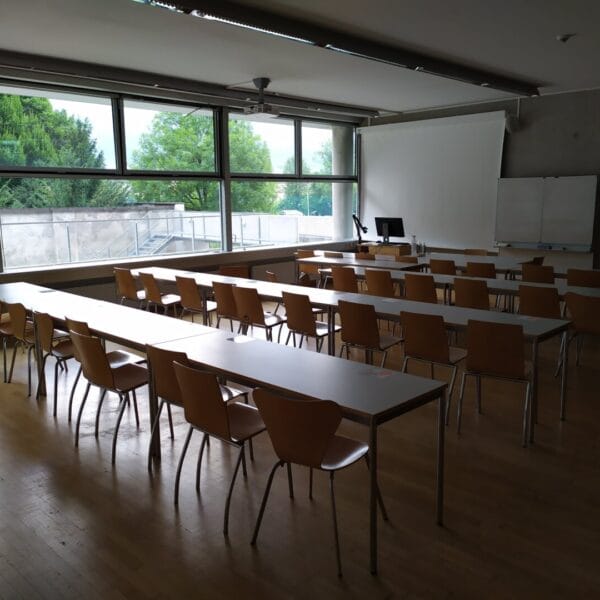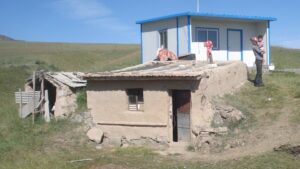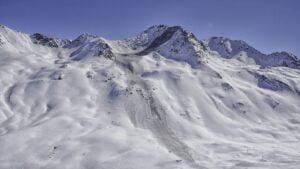ID13: Common Land And Resources in Global Mountains: Challenges in Coexistence
Details
Full Title
Common lands and resources in global mountains: challenges in coexistence need innovation in the commons to cope with ongoing changes and trends
Scheduled
Wednesday, 2022-09-14
13:30-15:00Convener
Co-Conveners
Jess L. Delves
Assigned to Synthesis Workshop
4. Social innovation and community resource management
Keywords
commons, common land, land tenure, land regimes, governance, transformation, access rights, resource management
Description
For centuries, mountain resources such as pasture, forests and water have been governed as common resources by local communities. Such land and resource governance is at odds with hegemonic neoliberal values of private property and capital accumulation. Yet commons hold great potential to foster democratic use of resources, equity in access and regenerative land management, which can help combat the multiple crises of climate change, biodiversity loss and social inequalities while accounting for local specificities. However, commons are threatened by inadequate legal tutelage, putting them at risk of absorption into private property markets. Furthermore, commons’ governance may itself reproduce power imbalances through the exclusion of some stakeholders (e.g. women, newcomers), may be socially conservative and resistant to change/innovation.
We invite practical and theoretical contributions from multiple disciplines which investigate commons and their role in just and regenerative transition, particularly in the context of conflictual development paradigms and disruptive change.
Important: This session is closely related to session ID71 and therefore it’s planned that the sessions will be scheduled consecutively.
Registered Abstracts
Abstract ID 664 | Date: 2022-09-14 13:30 – 13:41 | Type: Oral Presentation | Place: SOWI – Seminar room SR3 |
Plautz, Anna-Maria
University of Innsbruck, Austria
Keywords: Commons, Cultural Landscape, Autochthonous Minorities, Farmers, Nachbarschaften, Resilience, Valcanale, Friuli
The far north-eastern mountainous region of Italy, the Valcanale[1] in Friuli, belonged to Habsburg until the end of WWI. From the early Middle Ages onwards, the relatively small border area developed into a melting pot of the major European language families — Germanic, Slavic and Romance — due to the influx of Slovenian, German-speaking, Friulian and Italian groups. After WWI, the peace treaties of St. Germain-en-Laye (1919) and Rapallo (1920) sealed the valley’s annexation by Italy: The inhabitants were made Italian citizens and faced fascist Italianization measures. Although affected by the same fundamental changes as the South Tyrolean population, no minority protection was implemented for the Valcanale population until 1999. Lacking linguistic socialization, emigration, generational change, and assimilation to the Italian majority have contributed to the fact that only about 400 descendants can still actively use their autochthonous language(s).
During the presentation, the author will argue that, even though the Italian influence has been strong, special socio-agrarian structures could be maintained. These, in turn, have mitigated cultural assimilation and initiate new perspectives for enhanced sociocultural and -economic resilience. In this respect, the remaining farmers, and the active members of the “Nachbarschaften”[2] are of great importance. For a thorough analysis, data has been collected on an ongoing basis since March 2020 using a mixed methods approach: observations, photo documentation, semi-structured interviews, and focus group discussions on the one hand, a digital questionnaire, and well-founded estimates by experts — in addition to official data — on the other.
The voluntary, active collaboration within the “Nachbarschaften”, which has preserved and cultivated long-established commons based on property-linked servitude rights, is not only characterized by tight relations to Austria or Slovenia. It also testifies to the awareness of both the cultural landscape’s and the village communities’ vulnerability. Furthermore, there is an emerging appreciation of the idle potential “their commons” could provide for social cohesion, cultural preservation, and a more sustainable economic development. As in other alpine areas, however, sectoral change has also left traces on the Valcanale. Only few (full-time) farmers still contribute with their work to the preservation of old traditions and the mountainous cultural landscape.
[1] Kanaltal in German, Kanalska dolina in Slovenian and Valcjanâl in Friulian
[2] Consorzi Vicinali = Weide-/Wald-/Agrargemeinschaft
Abstract ID 475 | Date: 2022-09-14 13:41 – 13:52 | Type: Oral Presentation | Place: SOWI – Seminar room SR3 |
Pagot, Giacomo; Gatto, Paola
Università degli studi di Padova, Italy
Keywords: Collective Action, Inner Area, Alps, Biomass For Heating, Forest Commons
In context where energy transition from fossil fuels to renewable energy sources is pivotal in mitigating climate change effects, mountain communities can be one step ahead. Abundance of forest resources makes the mountain areas of Italy suitable for the development of a renewable thermal energy system, the District heating system based on biomass (BDH) (Caputo et al., 2019, Soltero et al., 2018). When based on unused resources, benefits for the local communities for environmental, economic and social aspects are amplified.
One key aspect in developing BDH systems is the social dimension. It involves the supply chain stakeholders, but also the local community. Studies on social dimension are missing (Cambero and Sowlati, 2014).
The present contribution addresses this gap by investigating the social issues related to cooperating for the use of forest residues, in developing a BDH system. Comelico, an Inner Area of Italy, has abundant yet unused forest residues from forest operations. A BDH system could promote cooperation among local communities and collective forest properties, the Regole. Regole are classified as private property according to the Italian law, but their nature as collective property of the historical families living in the area is still strong, as their role as institutions in their communities. Alone, each Regola cannot supply enough biomass for a BDH system, but by coordinating with the other Regole, the supply could be sufficient.
Lack of information on social barriers to BDH systems development encourages the use of an explorative approach with qualitative data. The methods are based on semi-structured interviews to stakeholders, fitted in a SWOT analysis on developing a local BDH system.
The stakeholders are the Regole presidents, who manage more than 80% of the forest in Comelico, on the supply side. On the demand side, the interviewees are potential consumers like municipalities and companies involved in the tourism sector, such as hotels and restaurants. Intermediaries, forest companies and foresters, are also involved in the analysis. This approach allows to identify not only the barriers in the supply chain, but also the interest of the potential consumers.
Developing a BDH with unused natural resources can help building trust and share information among the actors on the supply chain and promote future collective actions for local development.
The study outcome could support decision-makers, locally and Regionally, in developing BDH systems and in applying for funds or design supporting policies for the renewable energy sector.
Abstract ID 646 | Date: 2022-09-14 13:52 – 14:03 | Type: Oral Presentation | Place: SOWI – Seminar room SR3 |
Batiashvili, Nutsa
Free University of Tbilisi, Georgia
Keywords: Upper Svaneti, Care, Guarding, Heritage Objects, Sovereignty
This paper focuses on the ways in which practices of “caring for” and “guarding” the churches and heritage objects in the Caucasian highlands of Upper Svaneti, shape forms of belonging through material and symbolic agency. The wealth of the religious heritage kept in Svaneti – rarest samples of religious manuscripts, Georgian and Constantinopolitan iconography, numerous precious items and church inventory dating to Middle Ages – are kept in the small churches, hidden within inaccessible landscapes of Upper Svaneti that only highlanders can navigate freely. Locals refer to heritage objects as “gandzi” (treasure) and guarding and caring for it is part of the communal self-organization practices, as heritage objects become sites of contestation between the locals, the state and the Orthodox Church. As such, beyond its religious function “gandzi” functions as a communal resource rooted in alternative understandings of ‘property’ and ‘ownership’ and enables power practices for renegotiating local sovereignty vis-à-vis hegemonmic power structures.
Abstract ID 761 | Date: 2022-09-14 14:03 – 14:14 | Type: Oral Presentation | Place: SOWI – Seminar room SR3 |
Wilke, Maria
Agricultural University of Iceland, Iceland
Keywords: Marine Spatial Planning, Fjord Ecosystems, Public Participation, Arctic
In the Arctic region of the Westfjords of Iceland, multiple environments encounter one another: steep cliffs, high mountain plateaus, glaciers, fjords, river outlets and expansive open sea areas. At the nexus of these environmental forces live a few thousand people in small settlements that are dependent on fishing, fish farming and tourism. Their livelihoods are threatened by the overuse of the marine space and by increasing natural hazards such as storm floods, avalanches, glacier retreat and landslides. Arctic coasts such as this are, in many ways, facing similar challenges than mountainous and Alpine regions in a rapidly changing climate. This makes it intriguing to bring together mountain research and Arctic marine research to explore cross-disciplinary synergies for transformative governance approaches.
One crucial challenge for local governance lies in the planning of a safe, sustainable and resilient path ahead, especially in the vulnerable fjord and mountain ecosystems. Iceland has recently launched a coastal and marine planning processes in the remote Westfjords, attempting to map and zone the areas of this land-sea interaction and determining future use. In order to make such processes democratically legitimate, participation should be ensured not only by a wide variety of relevant stakeholders, scientists and governance representatives, but also by the local public.
This study investigates governance and participation in planning in the Westfjords of Iceland. In order to assess the scope and depth of public participation in the Westfjords coastal planning process, data was collected over 5 months of exploratory immersion as a participant observer in local communities through semi-structured interviews, unstructured conversations, observations, and analysis of documentation related to the planning process. The results show that only a limited group of stakeholders has been engaged in the information gathering, but not in any discussion or decision-making process. There is little evidence of a public participation strategy. The planning process in the Westfjords is therefore unfolding unbeknownst to many local people. This lack of public participation highlights the need for more transparency, communication and education about the planning process itself as well as about environmental issues in the Westfjords. There is urgent need for inclusion of the public into environmental governance. This case study illustrates the status quo of marine governance in Iceland and foregrounds that transformative approaches to governance are vital to secure resilient and sustainable futures for remote communities.
Abstract ID 219 | Date: 2022-09-14 14:14 – 14:25 | Type: Oral Presentation | Place: SOWI – Seminar room SR3 |
Stevens, Madison Paige (1); Rawat, Shalini (2); Ramesh, Krishnamurthy (3)
1: University of British Columbia, Vancouver, Canada
2: ERA University, Lucknow, India
3: Wildlife Institute of India, Dehradun, India
Keywords: Community Forests, Commons, Biodiversity Conservation, Customary Law, Social Science
Human-wildlife conflict presents a persistent challenge for global biodiversity conservation. Yet in many communities who live closely with wildlife, local norms and ethics of care towards wild animals continue to enable coexistence and sustain local conservation efforts. In the Uttarakhand Himalaya, a biodiversity hotspot, van panchayat community forests support agro-pastoralist livelihoods and forest conservation through a co-management arrangement between local communities and the state. While the governance dimensions of the van panchayat are well documented, their impacts on wildlife are sparsely investigated, leaving uncertainty about whether and how community forest management contributes to conservation-compatible landscapes in the region. Among these forest-dependent mountain communities, are wildlife perceived as a threat to livelihoods, as kin who belong in these forests, or both, and what are the implications of these perceptions for biodiversity across the landscape? Informed by open-ended interviews gathered during a scoping study in 2019-2020 and household surveys conducted in 202 in fifteen community forests in Pithoragarh District, Uttarakhand, we explore the nature of human-wildlife relations in van panchayats. While results indicate high prevalence of human-wildlife conflict and associated hardships (mentioned by 71% of survey participants), many participants (60%) expressed persistent ethics of care, concern, tolerance, appreciation, or responsibility for wild animals. Moreover, residents frequently discussed the role of wildlife in maintaining healthy forests; many view continued forest conservation as imperative for mitigating conflict and ensuring peaceful coexistence in the landscape (34%). Individual affective perceptions of wildlife varied considerably, mediated by tradition and spiritual connections, management regimes, livelihood demands, and everyday encounters. These experiences inform mountain communities’ decisions and coping strategies for coexisting with their wild neighbours and are key to understanding their role as conservation actors.
Abstract ID 717 | Date: 2022-09-14 14:25 – 14:36 | Type: Oral Presentation | Place: SOWI – Seminar room SR3 |
Mitterer-Leitner, Theresa (1); Lonardi, Serena (2)
1: Management Center Innsbruck, Austria
2: University of Innsbruck, Austria
Keywords: Alpine Pastures, Tourism, Heritage, Sustainable Tourism, Mountain Regions
Alpine pastures are alpine grazing areas located above permanent settlement areas and below high mountain zones unsuitable for agriculture, i.e. between 1,300 and up to 3,000 meters above sea level (Ringler, 2009; Tasser et al., 2013). Due to their high elevation, alpine pastures are only cultivated in the summer months. They represent a complex cultural landscape comprising alpine pasture land, meadows, scattered wood pastures and alpine forests, as well as a variety of interconnected man-made elements necessary for pastoralism and dairy farming, such as stables, storage facilities, huts, fences, forest roads, a paths-network and energy and water supply (Ringler, 2009; Brugger & Wohlfahrter, 1983).
The success story of Alpine tourism is linked to alpine farming and the cultivation of alpine pastures. Until the 18th century, the mountain ranges in the center of Europe were considered an undesirable, dangerous place, where primitive “barbarians” resided (Bätzing, 2015). A growing interest in natural in the 18th century, as well as the works of the 19th-century inspired travels and expeditions towards this counterworld to the industrialized cities of Europe (Bätzing, 2015). Alpine pastures therefore contributed with both physical and aesthetic as well as cultural assets to the rise of modern alpine tourism.
Until today ,mountain tourism is characterized by traditional winter and summer sports activities like skiing and hiking. However, even though these aspects are still the main pull factors in mountain regions (Peters et al., 2011), some research has highlighted how tourists are also looking for culture (Lane & Kastenholz, 2015; Richards, 2018). In this context, Corti (2014 ?) has introduced the term “Alpine-pasture heritage” to outline the tangible, intangible and biologically based cultural heritage related to alpine pastures
Through the model for destination competitiveness and sustainability developed by Ritchie & Crouch (2011), this paper aims at:
- evaluating the current tourism products involving alpine pastures
- analyzing the future potential impact of the tourism industry to the maintenance of this historical activity
- make recommendations for the development of an integrated and sustainable tourism product



